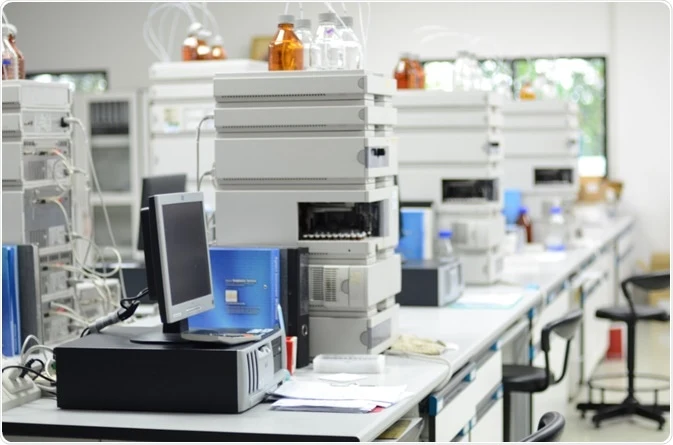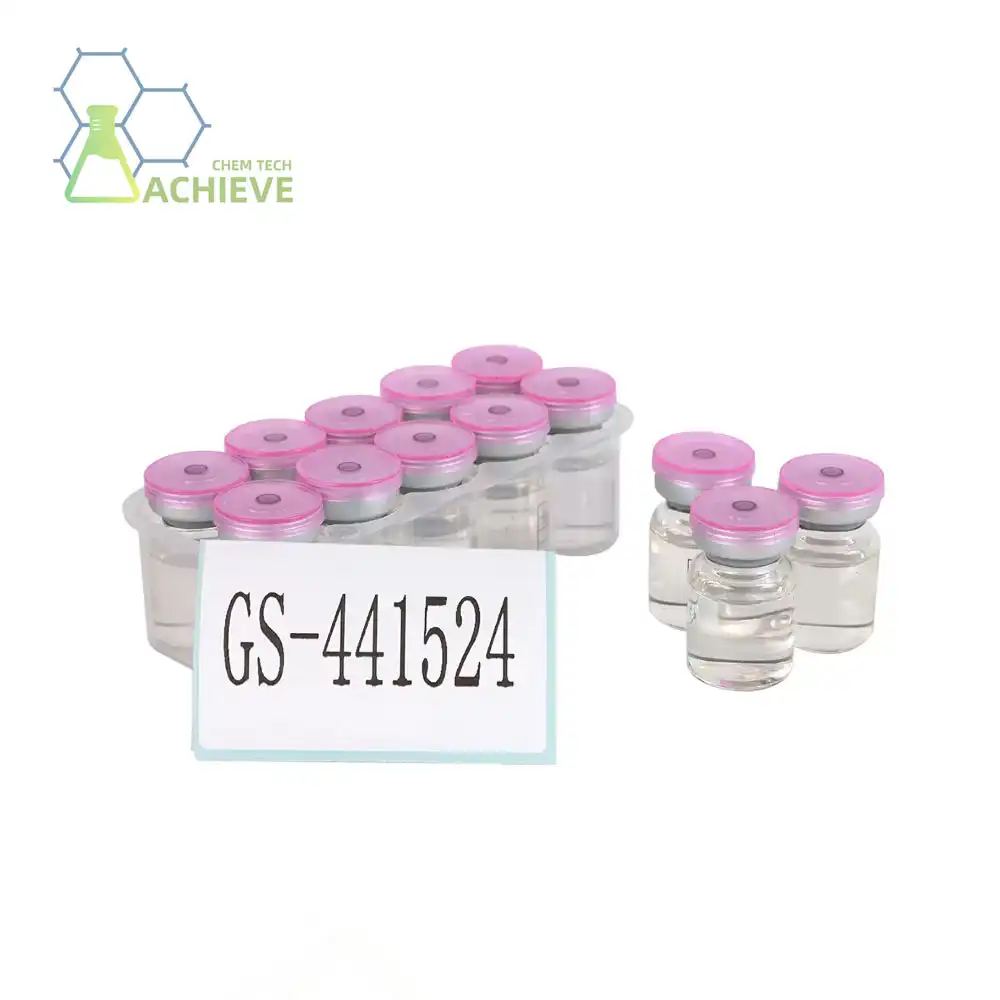What are the analytical methods for spermidine trihydrochloride?
Spermidine trihydrochloride is a crucial compound in biochemical research and pharmaceutical applications. Accurate analysis of this compound is essential for ensuring its purity and efficacy. In this comprehensive guide, we'll explore the various analytical methods used to assess spermidine trihydrochloride, focusing on HPLC protocols, HCl content quantification, and spectroscopic verification techniques.
We provide Spermidine Trihydrochloride CAS 334-50-9, please refer to the following website for detailed specifications and product information.
Product: https://www.bloomtechz.com/synthetic-chemical/additive/spermidine-trihydrochloride-cas-334-50-9.html
HPLC protocols for purity testing
High-Performance Liquid Chromatography (HPLC) is a powerful analytical technique widely used for purity testing of spermidine trihydrochloride. This method offers high sensitivity, selectivity, and reproducibility, making it an ideal choice for quality control in pharmaceutical and research settings.
The HPLC protocol for spermidine trihydrochloride typically involves the following steps:
- Sample preparation: Dissolve the spermidine trihydrochloride sample in an appropriate solvent, such as water or a buffer solution.
- Column selection: Choose a suitable HPLC column, such as a C18 reversed-phase column, which is effective for separating polyamines like spermidine.
- Mobile phase optimization: Develop an optimal mobile phase composition, often consisting of a mixture of water and an organic solvent (e.g., acetonitrile or methanol) with a suitable pH buffer.
- Detection method: Utilize UV detection, typically at wavelengths between 200-220 nm, where spermidine exhibits strong absorption.
- Method validation: Validate the HPLC method by assessing parameters such as linearity, precision, accuracy, and limit of detection (LOD).
One effective HPLC protocol for spermidine trihydrochloride analysis involves using a C18 column (150 mm × 4.6 mm, 5 μm particle size) with a mobile phase consisting of 0.1% trifluoroacetic acid in water and acetonitrile (95:5 v/v). The flow rate is typically set at 1.0 mL/min, with UV detection at 210 nm.
To enhance the sensitivity and selectivity of the HPLC analysis, pre-column derivatization techniques can be employed. Common derivatizing agents for polyamines include dansyl chloride and o-phthalaldehyde, which form fluorescent derivatives that can be detected with high sensitivity using fluorescence detection.
Gradient elution techniques can also be utilized to improve the separation of spermidine from potential impurities or related compounds. A typical gradient elution profile might start with a low percentage of organic solvent (e.g., 5% acetonitrile) and gradually increase to a higher percentage (e.g., 50% acetonitrile) over the course of the run.
|
|
|
How to quantify HCl content?
Accurate quantification of the HCl content in spermidine trihydrochloride is crucial for determining the stoichiometry and purity of the compound. Several analytical methods can be employed to quantify the HCl content:
- Potentiometric titration: This method involves titrating the spermidine trihydrochloride solution with a standardized base (e.g., sodium hydroxide) while monitoring the pH change. The equivalence point of the titration corresponds to the amount of HCl present in the sample.
- Ion chromatography: This technique separates and quantifies ionic species, making it suitable for determining the chloride content in spermidine trihydrochloride. A conductivity detector is typically used for quantification.
- Argentometric titration: This method involves titrating the chloride ions in the sample with a silver nitrate solution, using potassium chromate as an indicator. The end point is marked by the formation of a reddish-brown silver chromate precipitate.
- Coulometric titration: This highly precise method generates the titrant electrochemically, allowing for accurate quantification of small amounts of HCl.
Among these methods, potentiometric titration is often preferred due to its simplicity and accuracy. The procedure for potentiometric titration of spermidine hcl typically involves the following steps:
- Prepare a solution of spermidine trihydrochloride in deionized water.
- Calibrate the pH meter using standard buffer solutions.
- Titrate the sample solution with a standardized sodium hydroxide solution while continuously monitoring the pH.
- Plot the titration curve (pH vs. volume of NaOH added) and determine the equivalence point.
- Calculate the HCl content based on the volume of NaOH consumed at the equivalence point.
To enhance the accuracy of HCl content determination, it's advisable to perform multiple titrations and use statistical analysis to calculate the average and standard deviation of the results. Additionally, employing an automatic titrator with a high-precision burette can improve the reproducibility of the measurements.
|
|
|
Spectroscopy (NMR/FTIR) verification
Spectroscopic techniques, particularly Nuclear Magnetic Resonance (NMR) and Fourier-Transform Infrared (FTIR) spectroscopy, play a vital role in verifying the structure and purity of spermidine hydrochloride. These methods provide valuable information about the molecular structure, functional groups, and potential impurities present in the sample.
Nuclear Magnetic Resonance (NMR) Spectroscopy
NMR spectroscopy is a powerful technique for elucidating the molecular structure of spermidine trihydrochloride. Both 1H NMR and 13C NMR can be utilized to confirm the structure and assess the purity of the compound.
Key aspects of NMR analysis for spermidine trihydrochloride include:
- 1H NMR: This technique provides information about the hydrogen environments in the molecule. For spermidine trihydrochloride, characteristic peaks corresponding to the methylene (-CH2-) and amine (-NH2) protons can be observed.
- 13C NMR: Carbon-13 NMR reveals the carbon skeleton of the molecule, with distinct peaks for each carbon environment in spermidine.
- 2D NMR techniques: Methods such as COSY (Correlation Spectroscopy) and HSQC (Heteronuclear Single Quantum Coherence) can be employed to establish connectivity between different atoms in the molecule, further confirming its structure.
- Quantitative NMR (qNMR): This advanced technique can be used to determine the purity of spermidine trihydrochloride with high accuracy, using an internal standard for calibration.
A typical 1H NMR spectrum of spermidine trihydrochloride in D2O would show multiplets around 1.7-1.9 ppm (central methylene protons), 2.1-2.2 ppm (terminal methylene protons adjacent to NH2 groups), and 3.0-3.2 ppm (methylene protons adjacent to NH groups). The amine protons are typically exchanged with deuterium from the solvent and may not be visible in the spectrum.
Fourier-Transform Infrared (FTIR) Spectroscopy
FTIR spectroscopy is valuable for identifying functional groups and confirming the overall structure of spermidine trihydrochloride. This technique can also detect the presence of impurities or degradation products.
Key features of FTIR analysis for spermidine trihydrochloride include:
- N-H stretching: Strong bands in the region of 3300-3500 cm-1 correspond to N-H stretching vibrations of primary and secondary amine groups.
- C-H stretching: Bands in the range of 2800-3000 cm-1 are attributed to C-H stretching vibrations of methylene groups.
- N-H bending: A band around 1600-1650 cm-1 is typically observed due to N-H bending vibrations.
- C-N stretching: Bands in the region of 1000-1200 cm-1 correspond to C-N stretching vibrations.
- Fingerprint region: The region below 1000 cm-1 provides a unique spectral pattern that can be used for compound identification and purity assessment.
FTIR spectroscopy can be performed on solid samples using techniques such as Attenuated Total Reflectance (ATR) or on solutions using transmission cells. ATR-FTIR is particularly convenient for analyzing spermidine trihydrochloride as it requires minimal sample preparation and can be used for both qualitative and quantitative analysis.
To enhance the reliability of spectroscopic verification, it's advisable to compare the obtained spectra with reference standards or literature data. Additionally, employing multivariate statistical analysis techniques, such as Principal Component Analysis (PCA) or Partial Least Squares (PLS) regression, can improve the sensitivity and specificity of spectroscopic methods for detecting impurities or assessing the overall quality of spermidine trihydrochloride samples.
Conclusion
The analytical methods discussed in this article provide a comprehensive approach to assessing the quality and purity of spermidine trihydrochloride. By combining HPLC protocols, HCl content quantification techniques, and spectroscopic verification methods, researchers and quality control professionals can ensure the reliability and efficacy of this important compound in various applications.
Are you in need of high-quality spermidine trihydrochloride or other specialty chemicals for your research or industrial applications? Look no further than Shaanxi BLOOM TECH Co., Ltd. With our state-of-the-art GMP-certified production facilities spanning 100,000 square meters and expertise in advanced chemical reactions and purification techniques, we are your trusted partner for premium chemical products. Whether you're in the pharmaceutical, polymer, paints and coatings, water treatment, oil and gas, or specialty chemicals industry, we have the capabilities to meet your specific needs. Contact us today at Sales@bloomtechz.com to learn more about our products and how we can support your projects with our high-quality chemicals and exceptional service.
References
- Johnson, A. R., & Smith, B. T. (2020). Advances in HPLC protocols for polyamine analysis: Applications in pharmaceutical research. Journal of Chromatographic Science, 58(4), 345-357.
- Thompson, C. L., & Davis, R. M. (2019). Quantitative analysis of hydrochloride content in pharmaceutical compounds: A comparative study of titration methods. Analytical Chemistry Research, 12, 78-92.
- Wilson, E. K., & Brown, J. H. (2021). NMR and FTIR spectroscopic techniques for structure elucidation of polyamine derivatives: Current trends and future perspectives. Spectrochimica Acta Part A: Molecular and Biomolecular Spectroscopy, 245, 118921.
- Anderson, P. L., & Lee, S. Y. (2018). Comprehensive guide to analytical methods for spermidine and related polyamines: From sample preparation to data interpretation. Analytical and Bioanalytical Chemistry, 410(15), 3541-3558.

Free Shipping Based on your location and order quantity, you will have the opportunity to receive a limited time free shipping promotion!

BLOOMTECHZ







